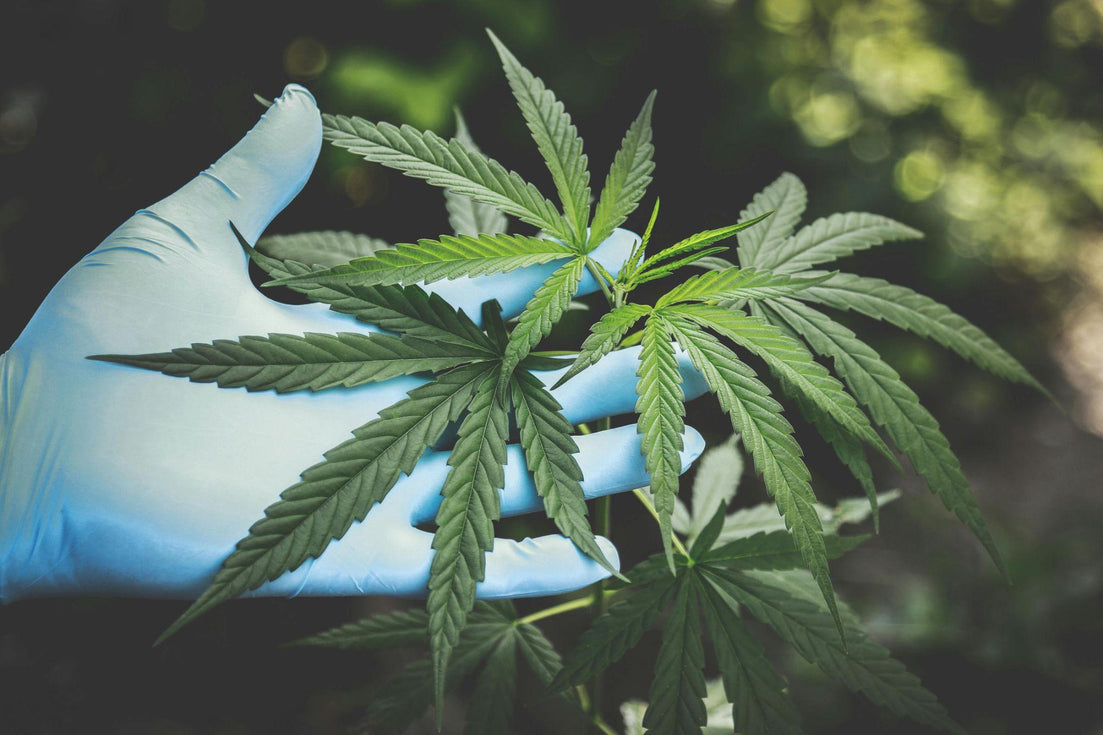Your cart is currently empty.

For many patients with serious medical conditions, finding effective medications can be a challenge. Many standard treatments for severe conditions, such as multiple sclerosis and epilepsy, often come with severe side effects and are nowhere near cheap. Now, thanks to revolutionary drugs like Sativex®, a cannabis-derived pharmaceutical, medical cannabis is becoming a standardized prescription drug. But, what exactly is Sativex® and how is it different from the cannabis plant? Here’s what you need to know.
What is Sativex® (nabiximol)?
Sativex® is a branded pharmaceutical made from cannabis developed by Britain’s GW Pharmaceuticals, the generic name for which is nabiximol. The drug is intended for the treatment of muscle spasticity caused by multiple sclerosis. Sativex® is in the form of a mouth spray that administers nabiximols, providing an even dose of unique chemical compounds in each spray. The active components of Sativex are cannabinoids, like CBD and CBN, that can be found in the cannabis plant.
 How does Sativex® work?
How does Sativex® work?
Sativex® is an oral spray derived from real cannabis, not a synthetic form. It contains tetrahydrocannabinol (THC), the primary psychoactive component in the cannabis plant. Sativex® contains a standardized 1:1 ratio of THC and another popular cannabinoid, cannabidiol (CBD).
Unlike THC, CBD is not responsible for the psychoactive high marijuana is known for. Due to this fact, extracts from medical cannabis plants high in CBD are often used to treat children with severe conditions like pediatric epilepsy, once its efficacy was discovered. Combining THC and CBD is thought to enhance the anti-spasmodic, pain-fighting, and neuroprotective effects of these helpful compounds.
Sativex® also contains some additional, specific and beneficial minor cannabinoids and terpenes. These terpenes are thought to work synergistically with cannabinoids and to amplify the therapeutic potential of each compound.
 As an oral mucosal spray, the active ingredients of Sativex® are absorbed under the tongue and in the soft tissue of the cheek, where they can quickly and easily bind to cannabinoid receptors.
As an oral mucosal spray, the active ingredients of Sativex® are absorbed under the tongue and in the soft tissue of the cheek, where they can quickly and easily bind to cannabinoid receptors.
There are two synthetic, laboratory-made cannabinoid medications on the market, dronabinol and nabilone, both of which were designed to mimic THC, and are prescribed to patients with cancer and AIDS-related nausea, weight-loss, and appetite loss. Sativex® is in a class all its own, as the drug is a natural extract of the actual cannabis plant.
What does Sativex® treat?
Sativex® has undergone many clinical trials as a treatment for a variety of medical conditions. It is currently approved for the treatment of spasticity related to multiple sclerosis. After demonstrating success in double-blind, randomized, placebo-controlled clinical trials in humans, they found it to be highly effective. That's not the only condition, though; those with rare muscular conditions like ganglia necrosis have also found tremendous success with this drug.
Patients in Canada are able to access Sativex® as a treatment for their cancer-related pain. Though, clinical trials in the United States have failed to prove that Sativex® effectively alleviates pain from cancer or chemotherapy. Early trials of the drug in cancer patients proved successful, yet the spray didn’t make the cut in later trials.
Although Sativex® can produce a slight psychoactive effect, there is no evidence that users have developed any tolerance for the drug over a one-year period.
GW Pharmaceuticals hopes that drugs similar to Sativex® will treat a number of other medical conditions, including epilepsy, cerebral palsy, schizophrenia, and cancer. Further clinical trials are sure to be in the future of cannabis-based pharmaceuticals in the upcoming years.
Is Sativex® the same as cannabis?
Sativex® is a formulated pharmaceutical drug that contains compounds derived from the cannabis plant. While some might argue that the drug is more or less an expensive cannabis tincture, this product does have a few key differences.
For one, the compounds included in Sativex® have been specially formulated as a treatment for multiple sclerosis. This product has also undergone rigorous clinical trials to ensure that it is safe and effective at easing related symptoms such as muscle spasticity and pain.
As a standardized pharmaceutical drug, Sativex® also delivers a consistent and reliable dose, which isn't the case for most of the cannabis tinctures it's being compared to. Every spray is measured and provides a specific ratio of cannabinoids in a specific dose.
 This precise measurement is not possible in crude cannabis extracts, as every individual plant produces different levels of cannabinoids, terpenoids, and phytocannabinoids. The doses found in crude cannabis extracts can be extremely variable, which might be frustrating for patients.
This precise measurement is not possible in crude cannabis extracts, as every individual plant produces different levels of cannabinoids, terpenoids, and phytocannabinoids. The doses found in crude cannabis extracts can be extremely variable, which might be frustrating for patients.
In general, however, the cannabis plant likely contains far more chemical compounds than a formulated pharmaceutical like Sativex®. Marijuana can produce over 400 different phytochemicals, including over 113 different cannabinoids. Researchers are only just beginning to understand what these cannabinoids are and how they interact with each other and within the body.
For this reason, many patients take the risk of consuming a full-extract medical cannabis oil made in small batches from real plants over a costly pharmaceutical. There is a growing movement of patients who advocate that “whole plant medicine” (full-spectrum marijuana) is the new direction for medical cannabis products. Though, whether or not this is safe or helpful is subject for debate and largely comes down to personal preference.
 Generally speaking, here are the pros and cons of choosing nabiximols over cannabis:
Generally speaking, here are the pros and cons of choosing nabiximols over cannabis:
Pros:
- Standardized dose
- Quality control
- Only legal option in many countries
- Specifically formulated for multiple sclerosis
- Considered a safe, pharmaceutical option
Cons:
- Expensive
- Difficult to acquire
- Potentially limited when compared to the cannabis plant
Does Sativex® have side effects?
Sativex® is made from cannabis and therefore produces what some might consider an intoxication or a high. However, the 1:1 ratio of THC and CBD in the drug causes it to produce a very mild high that some may not even feel. It is also reported that there are no known long-term negative effects on cognition.
In general, you can expect the following possible side effects from nabiximols:
- Dizziness
- Fatigue
- Diarrhea
- Drowsiness
- Nausea
- Headache
- Dry mouth
In general, the side effects of Sativex are considered mild and the drug is considered well-tolerated.
How much does Sativex® cost?
Sativex® is not a cheap drug. Without government subsidies to help pay the cost, nabiximol spray is incredibly expensive. In New Zealand, only 26 approved patients filled a prescription for Sativex in 2016 due to the high cost of the drug and the difficulty they had in obtaining a prescription. The average prescription costs around $1,200 (NZD) per month, or $16,650 (USD) annually.
 According to a professor at the London School of Medicine, Sativex® has “not been proven to be cost-effective” in the UK. However, if Sativex® is approved by the FDA in the US, the price would be considerably lower and governments would probably take on subsidies or require private insurance to cover the costs, providing greater accessibility to this medication for many patients.
According to a professor at the London School of Medicine, Sativex® has “not been proven to be cost-effective” in the UK. However, if Sativex® is approved by the FDA in the US, the price would be considerably lower and governments would probably take on subsidies or require private insurance to cover the costs, providing greater accessibility to this medication for many patients.
Where is Sativex® legal?
Sativex® is currently available in over 28 countries by prescription only. Some of the countries which allow for prescription nabiximols include:
- Austria
- Canada
- Czech Republic
- Denmark
- France
- Germany
- New Zeland
- Poland
- Spain
- Sweeden
- UK
- Wales
According to GW Pharmaceuticals, the company hopes to gain approval for Sativex for the treatment of MS-related spasticity in Middle Eastern and Latin American countries soon. It is unclear when and if this drug will be approved in the United States, which has a strict ban against THC and cannabis products due to marijuana's Schedule 1 classification.
 However, another GW Pharmaceuticals drug, Epidiolex, has shown dramatic success in various forms of epilepsy, including Dravet Syndrom and Lennox-Gastaut Syndrome. Epidiolex is a purified form of CBD and contains no THC whatsoever. Already, patients have received special approval to access this drug in the United States, where it has undergone successful phase 3 clinical trials.
However, another GW Pharmaceuticals drug, Epidiolex, has shown dramatic success in various forms of epilepsy, including Dravet Syndrom and Lennox-Gastaut Syndrome. Epidiolex is a purified form of CBD and contains no THC whatsoever. Already, patients have received special approval to access this drug in the United States, where it has undergone successful phase 3 clinical trials.
This and the growing support for Sativex® gives hope to those suffering from these conditions that this medicine will be made available and accessible to them in the upcoming years.
. Written by Megan Medeiros (BA)
Written by Megan Medeiros (BA)
Megan Medeiros has a bachelor’s degree in English and is currently working on a master’s in English at James Madison University. She's the owner and operator of Medeiros Writing, and has been working as a cannabis writer for the past three years, mostly following the legal climate of marijuana, especially in areas like California, Colorado, Oregon, Canada, and other legal areas.
This post contains references to products from one or more of our advertisers. We may receive compensation when you click on links to those products. For an explanation of our Advertising Policy, visit this page. All photos were sourced from Pinterest.com | updated 2021



